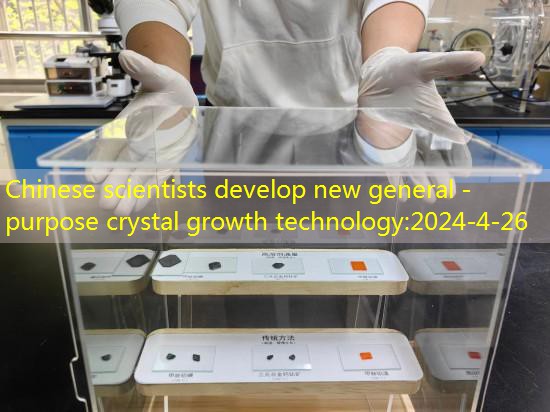The reporter learned from East China University of Technology a few days ago that the school’s clean energy and device team independently developed a universal growth technology for perovskite monocrystalline chip, which shortened the crystal growth cycle from 7 days to 1.5 days, and achieved more than 30 species of metal metals.The low temperature, fast, and controllable preparation of halogen perovskite semiconductor has provided a rich material library for the new generation of high -performance optoelectronic devices.Related results were published in the international academic journal “Nature · Communication”.
Metal halide perovskite is a new type of semiconductor material prepared by a type of optoelectronic properties and prepared by solution. It shows application prospects in the manufacture of devices such as solar batteries, light -emitting diode, and radiation detectors.However, these devices are currently mainly used as a photococoid film for light active materials, and their inherent defects will significantly reduce the performance and service life of the device.If the density density is only one -one hundred thousand in polycrystalline thin film, and a single crystal chip with excellent transportation capacity and stability, it can create higher -performance optoelectronic devices.Scientists compare polycrystalline thin films and single crystal chips to “broken diamonds” and “perfect diamonds”, respectively to show the advantages and disadvantages of the two.
Researchers in East China University of Science and Technology show the universal growth technology of perovskite single crystal chip.Xinhua News Agency reporter Wu Zhendong Photo
For a long time, there is no universal preparation method of single crystal chip in the world. The traditional method can only prepare several millimeter -level single crystals in a way to meet the high temperature environment and slow growth rate, which greatly limits the actual application of single crystal chipsEssenceFor multiple processes such as formation, dissolution, quality, and response involved in the growth of single -crystal chip growth of perovskite, the team of East China University of Technology combined with multiple experimental arguments and theoretical simulation, revealing that the quality transmission process is the key factors that determine the growth rate of the crystal growth rateAs a result, a growth system represented by di oxygenol ethanol, which finely regulates the dynamic beam of the rubber beam through multi -setting groups, increases the diffusion coefficient of the solution by 3 times.In the high -soluble flux system, the researchers realized the temperature of the crystal growth environment by 60 degrees Celsius, the growth rate of the crystal increased by 4 times, and the growth cycle was shortened from 7 days to 1.5 days.
Hou Yuju, a professor at East China University of Science and Technology, said that under 70 degrees Celsius, the growth rate of methyl iodine chips can reach 8 microns/minutes.The 4mm under traditional methods has been greatly improved.”We break through the technical barriers of insufficient soluble diffusion in the traditional growth system, and provide a more universal, more efficient, lower -conditioned single crystal chip growth route.”
Based on this breakthrough, the team assembled high -performance single crystal chip radiation detection devices, which not only achieves self -power supply radiation imaging, avoids the limit of high working voltage, but also greatly reduces the radiation intensity. Taking chest transparency as an example, the new device of the new device isThe radiation strength value is only one percent of conventional medical diagnosis.(Reporter Wu Zhendong)






